Lemon and poppy seed has been done a thousand ways, but most versions taste either too sweet or too flat. This three-layer Lemon Poppy Seed Cake manages to do what few recipes get right: deliver real lemon flavor with just enough tang to keep each bite bright. You won’t get a sugar rush here. The balance of zest, juice, and buttery crumb makes it a cake that tastes good, especially with that plush lemon cream cheese frosting.
What you’ll learn here goes beyond steps and measurements. This recipe shows you how to get the lemon flavor to stand out without becoming sour, how to use poppy seeds for more than just looks, and how to stack a three-layer cake that holds together.
If you’ve struggled with dry lemon cake or bland frostings, this method gives you a better result without making it complicated.
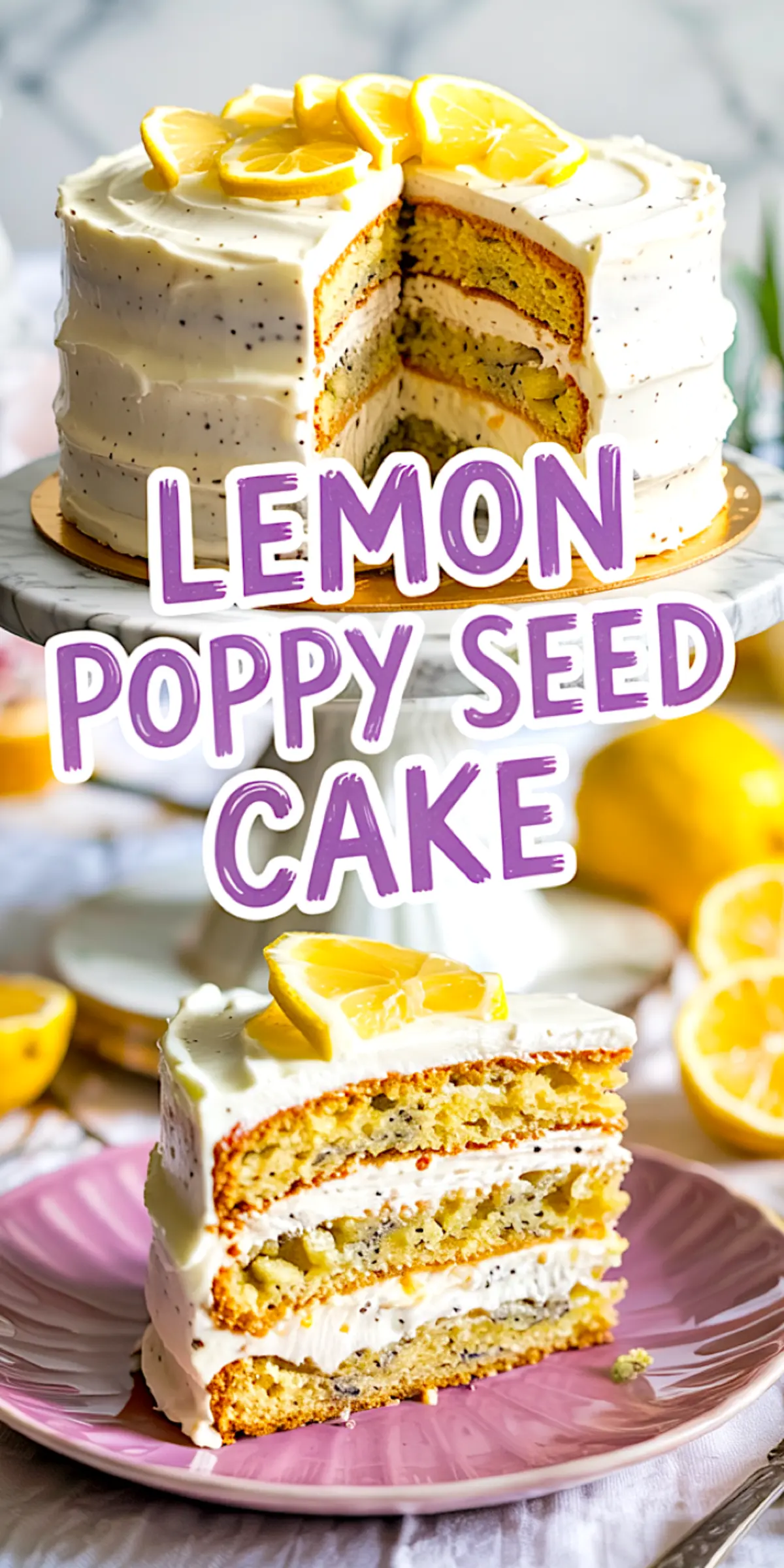
Dry Ingredients That Build Flavor and Structure
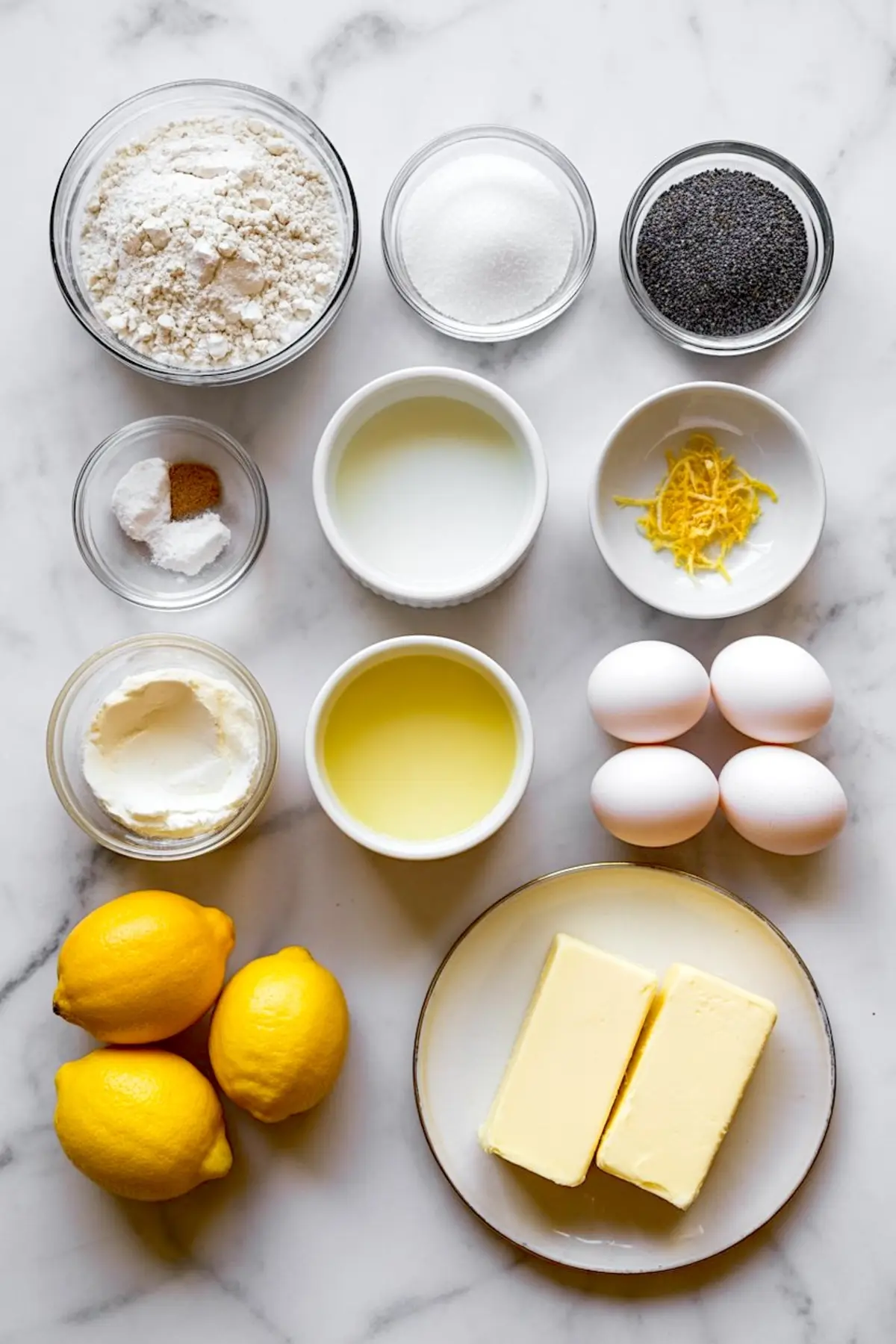
All-purpose flour gives this cake its base. I’ve tested this with cake flour, and while the texture turns slightly lighter, the flavor doesn’t hold as well. Stick with all-purpose.
Baking powder and baking soda work together to give you a rise that doesn’t collapse after baking. The batter is thick, but it spreads evenly and bakes up with soft edges.
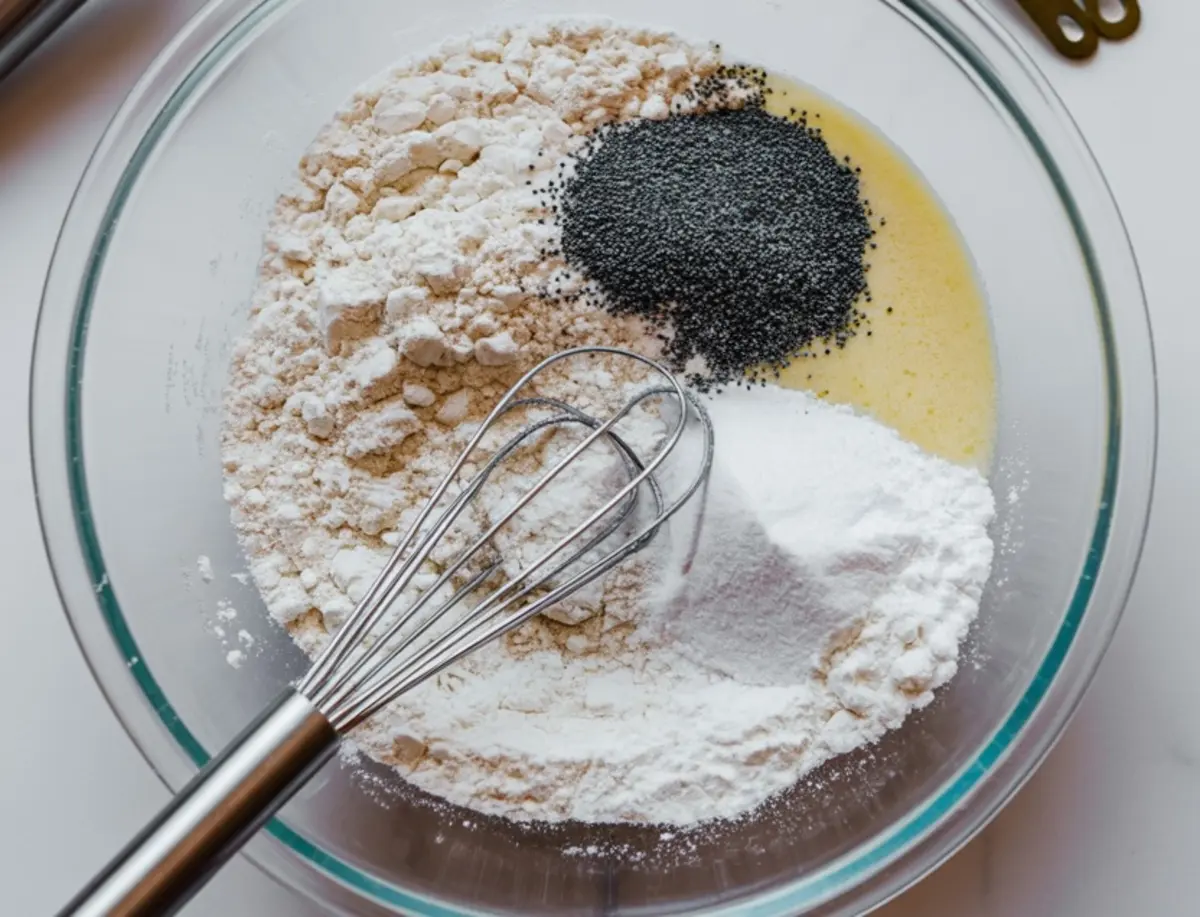
Poppy seeds go in with the dry mix to help disperse evenly through the batter. They’re more than decoration. They give a tiny pop in texture, which pairs beautifully with the lemon.
Why Butter and Lemon Zest Go First
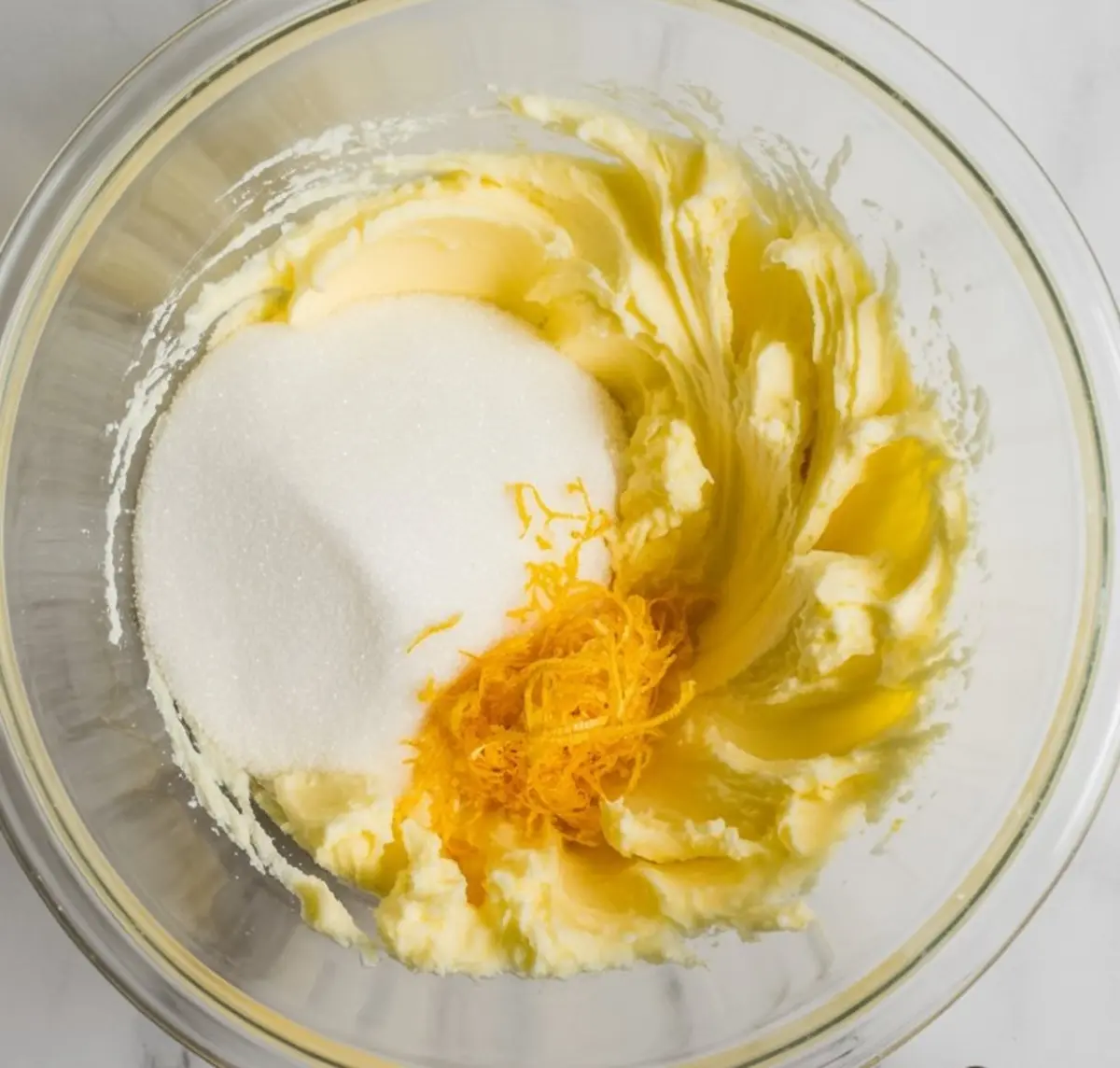
Softened butter, sugar, and fresh lemon zest are creamed together first. This isn’t just about mixing—it infuses the butter with the lemon oils. The scent alone tells you it’s working. Once that’s fluffy, add your eggs one at a time.
I always make sure the eggs are room temperature. Cold eggs make the batter seize and can affect the rise. Once they’re fully incorporated, add vanilla for balance.
This base should already smell like lemon cake. That’s how you know you’re doing it right.
If you like experimenting with citrus, this base also works beautifully in my Orange and Poppy Seed Cake variation.
The Buttermilk and Lemon Juice Trick
Fresh lemon juice mixed into buttermilk gives you both tang and moisture. This combination keeps the crumb soft without losing structure.
Add the flour mixture and lemon-buttermilk mixture in alternating batches. Always begin and end with the flour. That order helps the batter stay thick and stable.
Avoid overmixing here. Once the batter looks cohesive, stop. Overmixing is one of the main reasons lemon cakes turn out dense.
This trick also works for my Lemon Poppyseed Muffins.
Divide and Bake with Accuracy
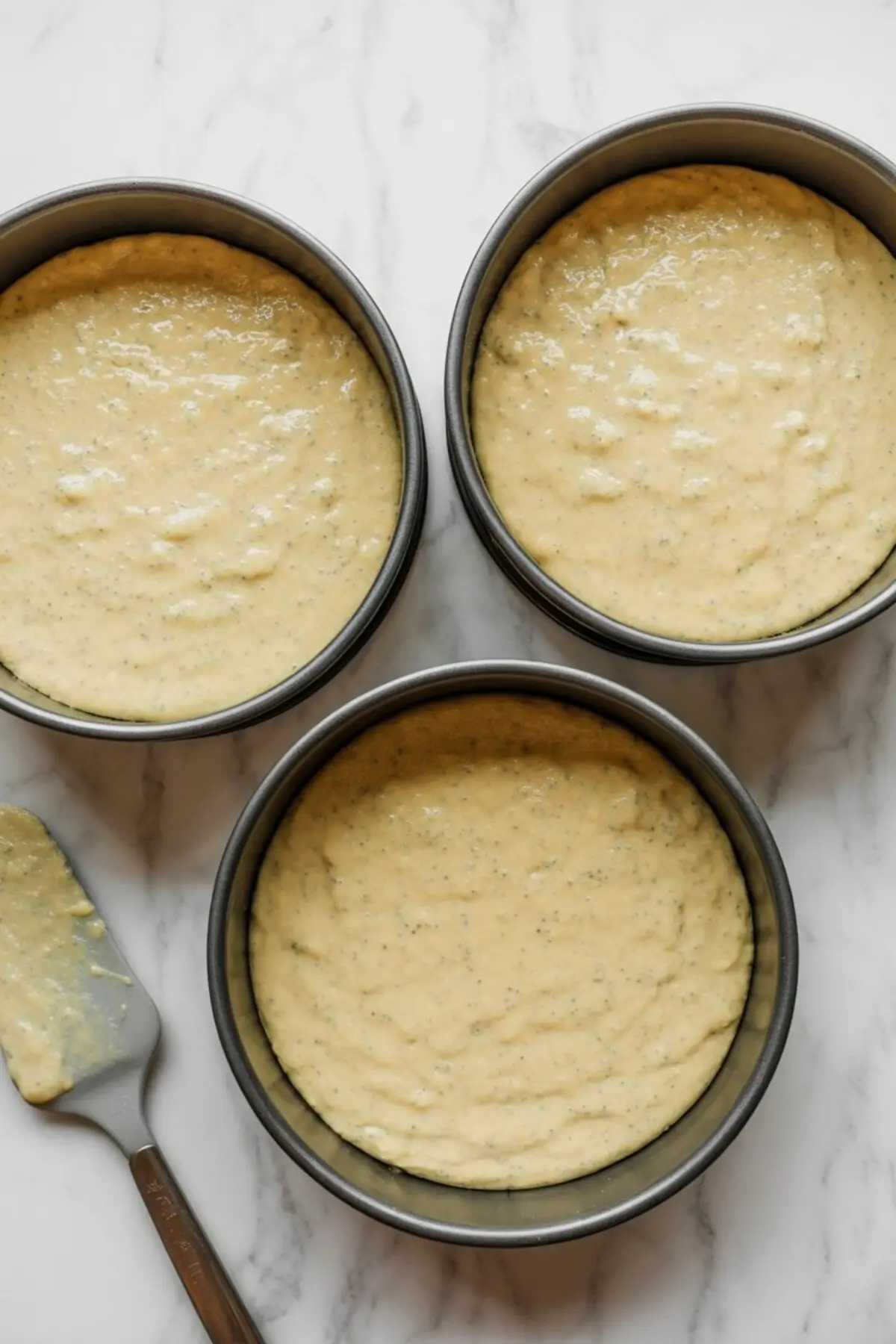
Use a scale or equal scoops to divide the batter between the three pans. Uneven layers can lead to a lopsided stack, and that affects both appearance and texture.
Bake until the tops spring back and a toothpick comes out clean. I usually pull mine around 26 minutes. Let them cool in the pan just briefly before moving to a wire rack.
In my notes, I’ve found that cakes cool more evenly when you flip them onto parchment paper rather than a bare rack. It also prevents sticking.
How to Make Cream Cheese Frosting That Doesn’t Slide Off
Cream cheese and butter need to be fully softened before beating. If they’re too cold, the frosting will turn lumpy. If too warm, it’ll go slack.
Add powdered sugar gradually, then stir in the lemon zest and juice. The acid in the juice cuts through the sweetness. A touch of salt helps round everything out.
This frosting holds its shape well but still spreads smoothly. I use the same method in my Lemon Poppyseed Bundt Caketoo.
Comparison: Buttermilk vs. Whole Milk in Lemon Cakes
I’ve tested this cake using both buttermilk and whole milk. Buttermilk gives a slightly thicker batter and a cleaner lemon flavor. Whole milk creates a lighter texture but dulls the citrus.
For a bright lemon cake, always choose buttermilk. It brings structure and flavor in equal measure.
You can apply this principle to other recipes too, like Lemon Poppyseed Cupcakes.
Assembly and Finishing Touches

Level the cakes with a serrated knife if needed. Start with a base layer, spread frosting edge to edge, then repeat with the next two.
Frost the top and sides, then add your garnish. I like thin lemon slices and a pinch of poppy seeds. Sometimes I use edible flowers when I want a more delicate look.
The frosting sets slightly after an hour, making it easier to slice. If you’re bringing it to an event, chill for 20 minutes before transport.
Serving and Storing Tips from My Kitchen
This cake serves cleanest when it has rested for an hour at room temperature after assembly. The flavors also deepen overnight.
If you store it in the fridge, keep it covered to prevent drying out. Before serving, let it return to room temperature for best texture.
Leftovers hold well for 2–3 days. After that, the lemon flavor begins to fade.
Pin This Recipe and Share Your Bake

Save this recipe to your Lemon Desserts board so you have it handy next time you need a showstopper that actually delivers on flavor.
And if you bake it, I’d love to hear how it turned out. Drop a comment below with your thoughts or questions. Your feedback helps others too.
Lemon Poppy Seed Cake Recipe
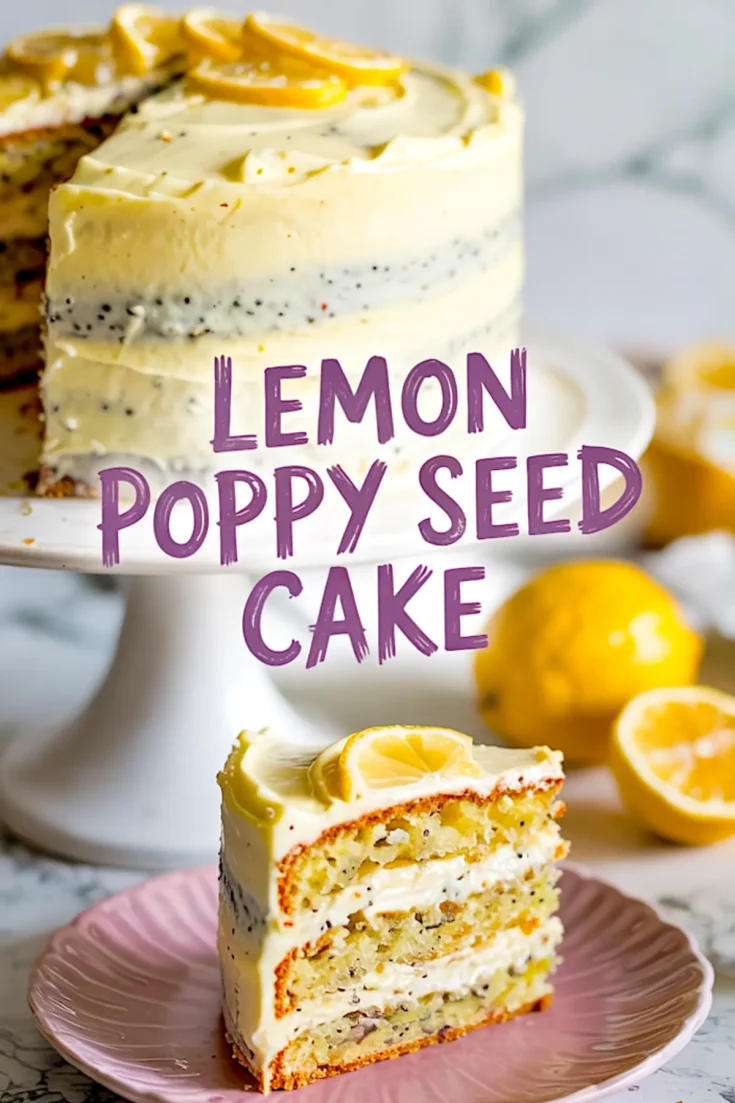
This 3-layer lemon poppy seed cake has a light, tender crumb, a balanced lemon flavor, and a tangy cream cheese frosting that complements without overwhelming. Poppy seeds add subtle texture to every bite. Each layer bakes up soft and fragrant, making this a standout dessert during lemon season.
Ingredients
- FOR THE CAKE (3 LAYERS)
- 3 cups all-purpose flour
- 2 ½ teaspoons baking powder
- ½ teaspoon baking soda
- ½ teaspoon salt
- 3 tablespoons poppy seeds
- 1 cup unsalted butter, softened
- 1 ¾ cups granulated sugar
- Zest of 2 lemons
- 4 large eggs, room temperature
- 1 teaspoon vanilla extract
- 1 cup buttermilk, room temperature
- ¼ cup fresh lemon juice
- FOR THE LEMON CREAM CHEESE FROSTING
- 1 cup (2 sticks) unsalted butter, softened
- 8 ounces cream cheese, softened
- 4 ½ cups powdered sugar
- Zest of 1 lemon
- 2 tablespoons fresh lemon juice
- ½ teaspoon vanilla extract
- Pinch of salt
- OPTIONAL GARNISH
- Thinly sliced lemons
- Extra poppy seeds
- Lemon zest or edible flowers
Instructions
- PREHEAT AND PREPARE: Preheat the oven to 350°F (175°C). Grease three 8-inch round cake pans and line the bottoms with parchment paper for easy release.
- MIX THE DRY INGREDIENTS: In a medium bowl, whisk together the flour, baking powder, baking soda, salt, and poppy seeds until evenly combined. Set aside.
- CREAM BUTTER, SUGAR, AND ZEST: In a large mixing bowl, beat the softened butter, granulated sugar, and lemon zest together on medium speed until the mixture is light and fluffy, about 3 minutes. Add eggs one at a time, beating well after each addition. Stir in the vanilla extract.
- ADD WET AND DRY ALTERNATELY: In a liquid measuring cup, combine the buttermilk and fresh lemon juice. With the mixer on low, add the dry ingredients in three parts, alternating with the lemon-buttermilk mixture. Begin and end with the dry ingredients, mixing each addition until just incorporated. Do not overmix.
- DIVIDE AND BAKE: Evenly divide the batter among the three prepared pans, using a kitchen scale or measuring cup for accuracy. Bake for 25 to 28 minutes, or until a toothpick inserted in the center comes out clean. Cool the cakes in the pans for 10 minutes, then carefully remove and transfer to wire racks to cool completely.
- MAKE THE FROSTING: In a clean mixing bowl, beat the softened butter and cream cheese together until smooth and creamy. Gradually add the powdered sugar, followed by the lemon juice, lemon zest, vanilla extract, and a pinch of salt. Beat until the frosting is fluffy and spreadable.
- ASSEMBLE THE 3-LAYER CAKE: If needed, level the cake layers with a serrated knife. Place the first layer on a cake stand or serving plate and spread a generous layer of frosting over the top. Repeat with the second and third layers. Use remaining frosting to coat the top and sides of the cake. Decorate with thin lemon slices, extra poppy seeds, or lemon zest as desired.
Notes
For best results, ensure all ingredients are at room temperature before starting. The frosted cake can be stored in the refrigerator for up to 3 days; allow it to come to room temperature before serving.
Nutrition Information
Yield
12Serving Size
1Amount Per Serving Calories 689Total Fat 27gSaturated Fat 15gTrans Fat 0gUnsaturated Fat 10gCholesterol 129mgSodium 408mgCarbohydrates 106gFiber 2gSugar 77gProtein 8g

